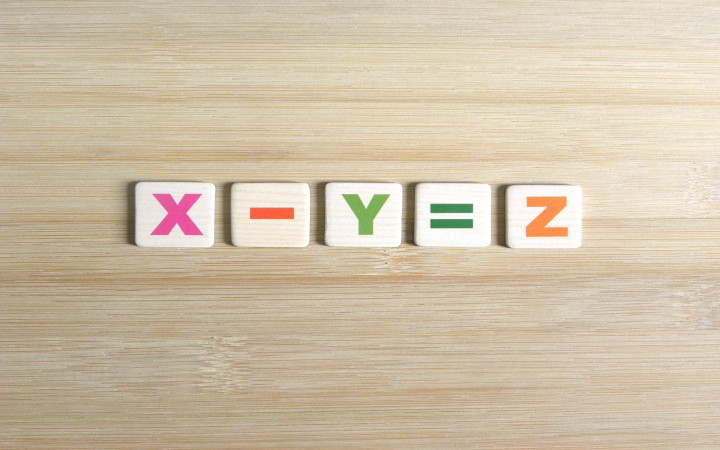Today’s Wonder of the Day was inspired by Logan. Logan Wonders, “Why did they put the alphabet and the . in math?” Thanks for WONDERing with us, Logan!
First, you learned to count. Then you moved on to addition and subtraction. Multiplication and division. Fractions, decimals, and even negative numbers. Nowadays, you may even solve problems that contain not only numbers but also letters!
What are we talking about? Algebra, of course! Algebraic math problems are called expressions. To solve an expression, you’ll need to know how to find the value of letters like x, n, and y.
Why did they put the alphabet in math? In algebra, letters are more than just parts of the alphabet. They stand in for unknown values. These letters also go by a special name—variables.
Let’s look at an example. Consider the problem below:
7 + n = 15
In this expression, “n” is a variable—an unknown value. To solve this expression, we need to get the variable, n, alone on one side of the equal sign. In doing so, it’s essential to follow this important rule: We must treat both sides of the expression the same. That means anything we add, subtract, multiply, or divide on one side of the problem must also be added, subtracted, multiplied, or divided on the other.
To isolate the variable n, we need to take away the number 7. How do we take away numbers in math? Subtraction, of course! After subtracting 7 on both sides, this is what the expression looks like:
n = 15 – 7
What do we do next? Just subtract 7 from 15. That leaves us with:
n = 8
Now, let’s check. Is the variable alone on one side of the equals sign? Yes. Are there any more operations (addition, subtraction, multiplication, division) to be carried out? No. That means we’ve solved the expression! In this problem, the value of n is 8.
Like other branches of math, algebra can help people solve real-world problems. It’s used in fields like finance, computer programming, and even space travel. If you enjoy math class—and especially algebra—then future work in one of these fields could be right for you!
For many kids, math is a favorite subject in school. After all, it’s so useful! Solving math problems can also be fun. However, many topics in math are difficult to understand. People often find this . If that sounds like your experience, don’t be afraid to ask your teacher or a friend to help. Often, all it takes is a different explanation or example to help a person better understand math.
Standards: CCSS.MATH.6.EE.2A, CCSS.MATH.6.EE.B6, CCRA.R.4, CCRA.L.3, CCRA.L.6, CCRA.R.2, CCRA.R.10, CCRA.W.2, CCRA.SL.1, CCRA.L.2, CCRA.R.1, CCRA.SL.3, CCRA.L.1




